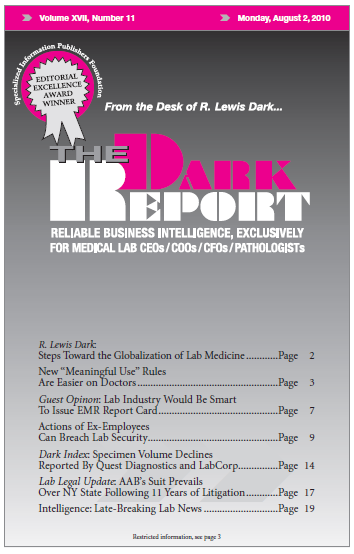Guest Opinion by: Pat Wolfram Editor’s Note: For almost 20 years, Pat Wolfram has worked to develop electronic medical record systems at companies like MedicaLogic and GE Healthcare. His firm specializes in developing effective electronic interfaces that allow a physician’s EMR system to handle lab test orders and lab test results with that physician’s clinical …
Lab Industry Would Be Smart To Issue EMR Report Card Read More »
To access this post, you must purchase The Dark Report.


